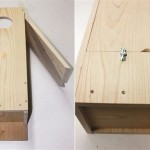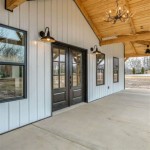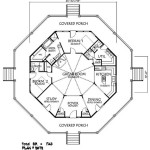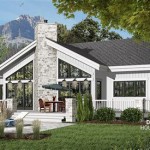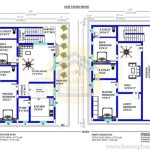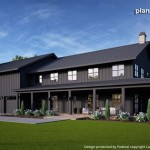A simple house floor plan encompasses the blueprint of a residential dwelling that emphasizes ease of construction, practicality, and efficient space utilization. Its uncluttered design ensures clear paths of movement and optimal utilization of available space, resulting in a comfortable and functional living environment.
Simple floor plans are particularly suitable for first-time homeowners, individuals seeking a low-maintenance lifestyle, or those prioritizing cost-effective construction. For example, a small, single-story home with a rectangular layout featuring a combined living-dining area, a separate kitchen, two bedrooms, a bathroom, and minimal hallway space exemplifies a simple house floor plan.
In the following sections, we will explore the key characteristics, advantages, and considerations associated with simple house floor plans, providing practical guidelines for designing and implementing these efficient and livable spaces.
Simple house floor plans adhere to the following key principles:
- Open and airy
- Efficient space usage
- Cost-effective construction
- Clear circulation paths
- Minimal hallways
- Natural light prioritization
- Flexible room layouts
- Single-story design
- Rectangular or square footprint
- Limited structural complexity
By incorporating these elements, simple house floor plans create comfortable, functional, and aesthetically pleasing living spaces that maximize space utilization and enhance daily living.
Open and airy
Open and airy floor plans prioritize creating a sense of spaciousness and natural light throughout the home. This is achieved by incorporating the following design elements:
- Large windows and doors: Expansive windows and sliding glass doors flood the home with natural light, reducing the need for artificial lighting and creating a connection to the outdoors.
- High ceilings: Vaulted or cathedral ceilings create a sense of volume and grandeur, making the space feel larger and more inviting.
- Open sightlines: Avoid visual barriers such as walls and partitions to allow for clear sightlines across the main living areas. This creates a more spacious and cohesive feel.
- Minimal hallways: Reduce the use of hallways to maximize usable living space. Open floor plans often incorporate designated zones for different activities, such as living, dining, and cooking, without the need for separate rooms.
- Multipurpose spaces: Design rooms that can serve multiple functions. For example, a great room can combine the living room, dining room, and kitchen into one open and airy space.
- Light color palette: Use light colors on walls, ceilings, and flooring to reflect light and create a brighter, more spacious feel.
- Mirrors: Strategically placed mirrors can reflect light and create the illusion of a larger space.
By incorporating these elements, open and airy floor plans create a bright, inviting, and spacious living environment that enhances the overall well-being and enjoyment of the home’s occupants.
Efficient space usage
Efficient space usage is a key aspect of simple house floor plans. By maximizing every square foot of available space, these plans create comfortable and functional living environments without sacrificing style or comfort.
Several design strategies contribute to efficient space usage in simple house floor plans:
- Open floor plans: As mentioned earlier, open floor plans eliminate unnecessary walls and partitions, allowing for a more spacious and cohesive feel. This approach maximizes usable space and creates a more flexible living environment.
- Multipurpose rooms: Multipurpose rooms serve multiple functions, eliminating the need for dedicated spaces for each activity. For example, a great room can combine the living room, dining room, and kitchen into one open and airy space. This approach saves space and creates a more versatile living area.
- Built-in storage: Built-in storage solutions, such as bookshelves, cabinets, and drawers, are integrated into the walls and other structures of the home. This eliminates the need for freestanding furniture, maximizing floor space and creating a more organized and streamlined look.
- Vertical storage: Vertical storage solutions, such as tall shelves, hanging organizers, and loft beds, utilize vertical space to maximize storage capacity without taking up valuable floor space.
- Smart furniture: Smart furniture pieces, such as ottomans with built-in storage, nesting tables, and convertible sofas, provide multiple functions in a single piece of furniture. This approach saves space and adds versatility to the living environment.
- Minimal hallways: Simple house floor plans minimize the use of hallways to maximize usable living space. Open floor plans often incorporate designated zones for different activities, such as living, dining, and cooking, without the need for separate rooms.
By incorporating these efficient space usage strategies, simple house floor plans create homes that are both comfortable and practical, maximizing functionality without compromising on style or livability.
Cost-effective construction
Simple design
Simple house floor plans prioritize straightforward and uncomplicated designs that minimize construction costs. This includes avoiding complex rooflines, intricate architectural details, and excessive ornamentation. Simple, rectangular or square footprints are more cost-effective to build than complex shapes with multiple angles and curves.
Efficient use of materials
Efficient use of materials is crucial for cost-effective construction. Simple house floor plans minimize material waste by optimizing the placement of windows, doors, and other structural elements. They also incorporate standardized materials and components, which are often more affordable and readily available than custom-made elements.
Smart construction techniques
Smart construction techniques can significantly reduce construction costs without compromising quality. These techniques include prefabrication, modular construction, and the use of sustainable materials. Prefabrication involves assembling components of the house off-site, which reduces labor costs and construction time. Modular construction involves building individual modules or sections of the house in a factory-controlled environment, which ensures precision and efficiency. Sustainable materials, such as recycled and renewable materials, can also contribute to cost savings over the long term.
Reduced labor costs
Simple house floor plans require less labor to construct compared to complex designs. The straightforward design, efficient use of materials, and smart construction techniques minimize the time and effort required for construction. This reduction in labor costs directly translates into lower overall construction costs.
By incorporating these cost-effective construction strategies, simple house floor plans enable homeowners to build comfortable and functional homes without breaking the bank. These plans prioritize affordability, efficiency, and smart design, ensuring that every dollar spent contributes to a well-built, livable space.
Clear circulation paths
Clear circulation paths are essential for creating a functional and comfortable living environment in simple house floor plans. They ensure that occupants can move safely and efficiently throughout the home without encountering obstacles or bottlenecks.
- Wide hallways and doorways: Wide hallways and doorways allow for easy movement of furniture, appliances, and people, preventing congestion and accidents. A minimum width of 3 feet for hallways and 32 inches for doorways is recommended.
- Open sightlines: Clear sightlines across the main living areas create a sense of spaciousness and make it easier to navigate the home. Avoid placing furniture or other objects that obstruct the flow of movement.
- Adequate turning radius: Provide enough turning radius in hallways, corners, and doorways to allow for comfortable movement of wheelchairs, strollers, or large furniture items. A turning radius of at least 5 feet is recommended.
- Designated traffic patterns: Establish designated traffic patterns, such as one-way hallways or separate entrances and exits for different areas of the home. This helps to minimize congestion and improve overall flow.
By incorporating these considerations into the design, simple house floor plans create homes that are both functional and accessible, ensuring that occupants can move around comfortably and safely.
Minimal hallways
Minimal hallways are a key characteristic of simple house floor plans. By reducing the amount of space dedicated to hallways, these plans maximize usable living space and create a more efficient and functional layout.
- Reduced square footage: Eliminating unnecessary hallways reduces the overall square footage of the home, resulting in lower construction costs and property taxes.
- Increased usable space: The space saved by minimizing hallways can be allocated to more livable areas, such as bedrooms, bathrooms, or living spaces, creating a more spacious and comfortable home.
- Improved flow and circulation: Open floor plans with minimal hallways allow for smoother and more efficient movement throughout the home, reducing congestion and creating a more cohesive living environment.
- Simplified cleaning and maintenance: Fewer hallways mean less space to clean and maintain, reducing the time and effort required for household chores.
By incorporating minimal hallways into the design, simple house floor plans create homes that are both space-efficient and easy to live in, maximizing comfort and convenience without sacrificing functionality.
Natural light prioritization
Natural light plays a crucial role in creating a healthy, comfortable, and visually appealing living environment. Simple house floor plans prioritize natural light by incorporating design elements that maximize the amount of sunlight entering the home.
- Large windows and doors: Expansive windows and sliding glass doors allow for ample natural light to flood the home, reducing the need for artificial lighting and creating a connection to the outdoors. Large windows in living areas, bedrooms, and kitchens bring the outside in, creating a bright and airy atmosphere.
- Skylights and solar tubes: Skylights and solar tubes are installed on the roof or ceiling to bring natural light into areas that may not have access to windows, such as hallways, bathrooms, and closets. These features provide additional natural light, reducing the need for artificial lighting and creating a more inviting and spacious feel.
- Light-colored walls and ceilings: Light-colored walls and ceilings reflect natural light more effectively, making the space feel brighter and more spacious. Avoid using dark colors, as they absorb light and can make the home feel smaller and dimmer.
- Open floor plans: Open floor plans with fewer walls and partitions allow natural light to penetrate deeper into the home, reaching areas that may not have direct access to windows. This creates a more cohesive and well-lit living environment.
By incorporating these natural light prioritization strategies, simple house floor plans create homes that are filled with natural light, reducing the need for artificial lighting, improving the mood and well-being of occupants, and creating a more sustainable and energy-efficient living environment.
Flexible room layouts
Flexible room layouts are a key feature of simple house floor plans. They allow homeowners to adapt and personalize their living spaces to meet their changing needs and preferences over time.
- Multipurpose rooms: Multipurpose rooms serve multiple functions, eliminating the need for dedicated spaces for each activity. For example, a great room can combine the living room, dining room, and kitchen into one open and airy space. This approach saves space and creates a more versatile living area that can be used for various activities.
- Movable walls and partitions: Movable walls and partitions allow homeowners to reconfigure the layout of their home as needed. These flexible elements can be used to create temporary or permanent room divisions, providing the flexibility to adapt the home to different stages of life or changing family dynamics.
- Built-in furniture: Built-in furniture, such as bookshelves, cabinets, and seating, can be designed to be modular and reconfigurable. This allows homeowners to customize their storage and seating arrangements to suit their specific needs and preferences.
- Open floor plans: Open floor plans with minimal walls and partitions provide the ultimate flexibility in room layout. Homeowners can arrange and rearrange furniture and other elements to create different zones for various activities, such as living, dining, and working, without the constraints of fixed walls.
By incorporating flexible room layouts into simple house floor plans, homeowners gain the freedom to customize and adapt their living spaces to suit their evolving needs, creating homes that are both functional and responsive to their lifestyles.
Single-story design
Single-story house floor plans offer numerous advantages for homeowners seeking simplicity, accessibility, and efficient living. These plans feature all living areas on one level, eliminating the need for stairs and providing easy access throughout the home. This design is particularly suitable for individuals with mobility concerns, families with young children, or those who prefer a more accessible and convenient living environment.
Single-story floor plans promote efficient use of space by eliminating vertical circulation areas such as stairs and hallways. This allows for a more compact and streamlined layout, maximizing usable living space. Additionally, single-story homes often have lower construction costs compared to multi-story homes, as they require less structural support and materials.
Another advantage of single-story floor plans is the seamless connection they provide between indoor and outdoor living areas. With direct access to the backyard or patio from multiple rooms, these plans encourage a strong connection to nature and extend the living space beyond the home’s interior. This integration of indoor-outdoor living creates a more enjoyable and immersive living experience.
Furthermore, single-story floor plans offer greater flexibility in terms of room layout and future expansion. Since all rooms are on one level, it is easier to reconfigure the layout or add on to the home without the constraints of multiple stories. This adaptability allows homeowners to customize their living space to suit their changing needs and preferences over time.
Overall, single-story house floor plans provide a range of benefits, including accessibility, space efficiency, indoor-outdoor integration, and flexibility. These plans are ideal for homeowners seeking a simple, convenient, and livable home that meets their evolving needs and lifestyle.
Rectangular or square footprint
Rectangular or square footprints are commonly used in simple house floor plans due to their advantages in terms of space utilization, structural stability, and cost-effectiveness.
- Efficient space utilization: Rectangular and square footprints allow for efficient use of space by minimizing wasted or unusable areas. These shapes lend themselves well to open floor plans, where multiple functions can be accommodated within a single, cohesive space.
- Structural stability: Rectangular and square footprints provide inherent structural stability compared to more complex shapes. The straight lines and right angles create a strong and rigid framework that can better withstand external forces, such as wind and seismic activity.
- Cost-effectiveness: Rectangular and square footprints are generally more cost-effective to construct than complex shapes with multiple angles and curves. This is because they require less materials and labor, resulting in lower overall construction costs.
- Flexibility in room layout: Rectangular and square footprints offer flexibility in terms of room layout. The regular shape of these footprints allows for various room configurations, making it easier to adapt the floor plan to different lifestyles and needs.
Overall, rectangular or square footprints are preferred in simple house floor plans due to their advantages in space utilization, structural stability, cost-effectiveness, and flexibility. These shapes provide a solid foundation for creating functional, efficient, and affordable homes.
Limited structural complexity
Simple house floor plans emphasize limited structural complexity to achieve cost-effectiveness, ease of construction, and efficient space utilization.
Structural complexity refers to the number and intricacy of structural elements, such as walls, beams, columns, and roof trusses, used in the construction of a home. Complex structural elements require more materials, labor, and engineering, which can significantly increase construction costs.
Simple house floor plans minimize structural complexity by employing straightforward and repetitive structural systems. These systems typically involve the use of standard building materials and components, such as wood frames, concrete slabs, and prefabricated trusses. By reducing the number of unique structural elements and minimizing the need for custom fabrication, simple floor plans streamline the construction process and reduce overall costs.
Furthermore, simple floor plans often incorporate open and flowing spaces, which eliminate the need for load-bearing walls and complex support structures. This approach allows for greater flexibility in room layout and memudahkan the creation of light-filled, spacious living environments.
Overall, limited structural complexity is a key characteristic of simple house floor plans. By minimizing the number and intricacy of structural elements, these plans achieve cost-effectiveness, ease of construction, and efficient space utilization, making them ideal for homeowners seeking affordable and functional homes.










Related Posts

